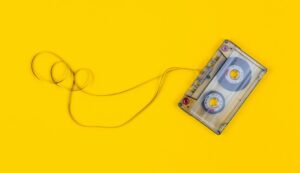The difference between receipts and receipts
There are some new clients, who
even have normal printed receipts from the casher (hereinafter referred to as
Receipt) but ask the stores also for the mostly handwritten acknowledgment
"Ryoshusho" (hereinafter referred to as Ryoshusho, and Receipt
and Ryoshusho collectively referred to as the "receipt"), or
they bring us both Receipt and Ryoshusho.
*Ryoshusho:
Mostly name addressed to, amount, description, name of the shop worker in
charge, shop stamp, and etc. are written, but without details like Receipt.
Some
people think that they have to submit vouchers (the original books, all the
documents that show sales and expenses) to the tax office.
people think that they have to submit vouchers (the original books, all the
documents that show sales and expenses) to the tax office.
In
fact,
fact,
Receipts are enough!!
Receipts are not submitted to the tax office.
If you get Receipts, please do
not ask for Ryoshusho instead. As the details are not on the Ryoshusho
as mentioned above and only a brief description like "in payment for meal"
or "in payment for commodities" are written on it, and you will never
know what you bought or for what you paid.
not ask for Ryoshusho instead. As the details are not on the Ryoshusho
as mentioned above and only a brief description like "in payment for meal"
or "in payment for commodities" are written on it, and you will never
know what you bought or for what you paid.
You
may think that Ryoshusho is better than Receipt and keep them as a proof,
it may give a bad impression to investigators of
the tax office during tax investigation.
may think that Ryoshusho is better than Receipt and keep them as a proof,
it may give a bad impression to investigators of
the tax office during tax investigation.
Tax investigators may assume that you intendedly get Ryoshusho to hide what you bought.
For
example, you buy something at a retail store, which sells grocery, clothing,
and stationery, and receive a Ryoshusho instead of a Receipt. And if the
description is "in payment for commodities", nobody can know what you
bought. If you don't have a proper breakdown, you can no longer record it as an
expense if you are a taxable enterprise for the consumption tax.
example, you buy something at a retail store, which sells grocery, clothing,
and stationery, and receive a Ryoshusho instead of a Receipt. And if the
description is "in payment for commodities", nobody can know what you
bought. If you don't have a proper breakdown, you can no longer record it as an
expense if you are a taxable enterprise for the consumption tax.
In the
case of hotel accommodations, the number of guests, and a breakdown of
"lodging," "meals," and "shopping" must be
provided. In the case of airfare, we would like to see at least the destination
and the number of people on board.
case of hotel accommodations, the number of guests, and a breakdown of
"lodging," "meals," and "shopping" must be
provided. In the case of airfare, we would like to see at least the destination
and the number of people on board.
During
a tax audit, the examiner will definitely see if it is a family trip or a
personal trip. Especially, when you go to a vacation destination on business during
a vacation period, the detailed statement is necessary to prove that this trip
is for work.
a tax audit, the examiner will definitely see if it is a family trip or a
personal trip. Especially, when you go to a vacation destination on business during
a vacation period, the detailed statement is necessary to prove that this trip
is for work.
If you
send congratulatory gifts or obituary gifts to your business partners, the
wedding invitation cards or the acknowledgement cards would be proof or
receipts. If you send the gifts in the form of registered mail, it would be
best to keep a copy of the registered mail. But if you don't have a copy, handwritten
memo would be OK. (Of course, weddings and funerals of your relatives are
household expenses, so they are not considered as business expenses.)
send congratulatory gifts or obituary gifts to your business partners, the
wedding invitation cards or the acknowledgement cards would be proof or
receipts. If you send the gifts in the form of registered mail, it would be
best to keep a copy of the registered mail. But if you don't have a copy, handwritten
memo would be OK. (Of course, weddings and funerals of your relatives are
household expenses, so they are not considered as business expenses.)
When shopping
on the internet, you should print out the receipt and invoice right away. If
you choose to pay by cash on delivery, a receipt will be handed on delivery
from a courier. As the details are not on the receipt, it isn't enough.
on the internet, you should print out the receipt and invoice right away. If
you choose to pay by cash on delivery, a receipt will be handed on delivery
from a courier. As the details are not on the receipt, it isn't enough.
Anyway,
you need to keep Receipts, Ryoshusho, or whatever form as documents to keep
record, when, with whom, where, and for what
purpose you needed to spend the money.
you need to keep Receipts, Ryoshusho, or whatever form as documents to keep
record, when, with whom, where, and for what
purpose you needed to spend the money.
If you
are an employee of a company, the documents to claim expenses are strictly
checked. But if you are a sole proprietor or work in a family company, you tend
to take such documents lightly. It is impossible to organize all the documents
at the time of filing a tax return. We highly recommend taking a note (directly
on Receipts or Ryoshusho is OK!!)
every time you go shopping, when you take out receipts from your wallet, or
when you come back from a business trip.
are an employee of a company, the documents to claim expenses are strictly
checked. But if you are a sole proprietor or work in a family company, you tend
to take such documents lightly. It is impossible to organize all the documents
at the time of filing a tax return. We highly recommend taking a note (directly
on Receipts or Ryoshusho is OK!!)
every time you go shopping, when you take out receipts from your wallet, or
when you come back from a business trip.
When
importing receipts into cloud software such as Money Forward, it is best to
write down notes before importing. If you have Receipts with a proper
breakdown, you don't need to write anything down.
importing receipts into cloud software such as Money Forward, it is best to
write down notes before importing. If you have Receipts with a proper
breakdown, you don't need to write anything down.
To the
tax office, you submit only the tax return form and do not submit receipts,
sales slips, or other vouchers.
tax office, you submit only the tax return form and do not submit receipts,
sales slips, or other vouchers.
In the
past, if you wanted to receive a deduction for medical expenses on your
personal tax return, you had to submit receipts for medical expenses along with
your tax return form, but now you have to keep them by yourself instead of
submitting them.
past, if you wanted to receive a deduction for medical expenses on your
personal tax return, you had to submit receipts for medical expenses along with
your tax return form, but now you have to keep them by yourself instead of
submitting them.
When
we used to submit the receipts for the medical expense deduction in a paper
bag, it was very thick. The tax returns documents of some elderly wealthy families
were about two centimeters thick. I guess the tax office doesn't have enough
storage space for all this.
we used to submit the receipts for the medical expense deduction in a paper
bag, it was very thick. The tax returns documents of some elderly wealthy families
were about two centimeters thick. I guess the tax office doesn't have enough
storage space for all this.
Some
stores issue both Receipts and Ryoshusho, but this is a bit weird. Generally,
only one of them will be issued to avoid customers to double-count their
expenses. However, it seems that the cash register software is designed to issue
both. To save time in dealing with customers who want receipts, the software is
designed to issue Ryoshusho after Receipts....
stores issue both Receipts and Ryoshusho, but this is a bit weird. Generally,
only one of them will be issued to avoid customers to double-count their
expenses. However, it seems that the cash register software is designed to issue
both. To save time in dealing with customers who want receipts, the software is
designed to issue Ryoshusho after Receipts....
You
may think, that the more the cashless system spreads, the less receipts are necessary,
as the transaction will be listed in the statement. But the statement only
shows the name of the store or company where the payment was made, so the
receipts are still necessary. It would be a great solution if the statement
could also show the details of the purchase, but I guess that's still a long way
off.
may think, that the more the cashless system spreads, the less receipts are necessary,
as the transaction will be listed in the statement. But the statement only
shows the name of the store or company where the payment was made, so the
receipts are still necessary. It would be a great solution if the statement
could also show the details of the purchase, but I guess that's still a long way
off.


